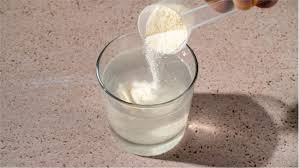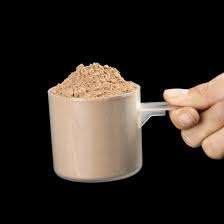Whey protein has long been hailed as the go-to supplement for muscle growth and fat loss, especially among fitness enthusiasts.
From bodybuilders to those just starting their fitness journey, whey protein is often considered a staple in achieving a lean, ripped physique.
But is whey protein truly a miracle for lean muscle gain, or is it just another overhyped product in the ever-growing world of supplements?
In this article, I will dive into the science behind whey protein, explore its role in muscle growth and fat loss, and determine whether it is genuinely the key to getting lean or simply a well-marketed supplement.
“Is Whey Protein a Miracle for Lean Muscle or Just Overhyped” Article Index:
- What is Whey Protein?
- How Does Whey Protein Work for Lean Muscle Gain?
- Best Whey Protein for Lean Muscle Gain
- Whey Protein for Weight Loss: How Effective Is It?
- Best Whey Protein for Getting Ripped
- Low-Calorie Whey Protein: A Game-Changer for Fat Loss?
- Whey Protein Shakes for Weight Loss
- Conclusion: Miracle or Overhyped?
What is Whey Protein?
Whey protein is a high-quality protein derived from milk during the cheese-making process. It is separated from the liquid portion of milk after curdling and is then processed into a powdered form.
Whey protein is considered one of the most efficient protein sources because it contains all nine essential amino acids that the body cannot produce on its own. This makes it a complete protein, essential for overall health and muscle maintenance.
One of the key characteristics of whey protein is its fast digestibility. Compared to other protein sources, whey protein is quickly absorbed by the body, making it ideal for those needing rapid protein replenishment, such as athletes or individuals recovering from exercise.
Types of Whey Protein
There are three primary types of whey protein, each varying in protein concentration and processing method:
-
Whey Protein Concentrate (WPC):
- Contains around 70–80% protein, with the remaining portion consisting of lactose, fat, and beneficial nutrients naturally found in milk.
- It undergoes minimal processing, retaining more of the natural compounds present in whey.
- According to the National Dairy Council, WPC is commonly used in protein powders, nutritional supplements, and food products due to its balanced protein-to-nutrient ratio (National Dairy Council, 2024).
-
Whey Protein Isolate (WPI):
- Contains 90% or more protein, with most of the lactose and fat removed during processing.
- Suitable for individuals who are lactose-sensitive or following a low-calorie diet.
- The U.S. Dairy Export Council states that WPI is widely used in high-protein supplements and medical nutrition products because of its purity and high protein content (U.S. Dairy Export Council, 2024).
-
Whey Protein Hydrolysate (WPH):
- A pre-digested form of whey protein, which undergoes enzymatic breakdown to make absorption faster.
- Frequently used in medical and infant formulas due to its high bioavailability.
- The American Dairy Science Association notes that WPH is beneficial for individuals with digestive issues or those needing rapid nutrient absorption (American Dairy Science Association, 2024).
How Whey Protein is Made?
The production of whey protein involves several steps:
- Milk Separation: During cheese production, enzymes are added to milk, separating the solid curds (which become cheese) from the liquid whey.
- Filtration and Purification: The whey undergoes ultrafiltration to remove excess fat, carbohydrates, and water while concentrating the protein.
- Drying and Processing: The purified whey is dried into a fine powder, which is then flavored or kept in its natural form for use in various applications.
>>> Want to Learn How I Lost Belly Fat Naturally without Spending a Single Dime??? Click Here to Find Out!<<<
The global dairy industry, including research from the Food and Agriculture Organization (FAO), emphasizes whey protein’s significance in food and nutrition due to its complete amino acid profile and diverse applications (Food and Agriculture Organization, 2024).
Whey protein is a complete and fast-digesting protein derived from milk, offering high bioavailability and various forms to suit different dietary needs.
Whether used for general nutrition, athletic performance, or medical applications, whey protein remains one of the most versatile and widely studied protein sources available today.
How Does Whey Protein Work for Lean Muscle Gain?
Whey protein’s key benefit for lean muscle gain lies in its high-quality amino acid profile.
It is particularly rich in leucine, an amino acid that plays a vital role in muscle protein synthesis. Muscle protein synthesis is the process through which muscles repair and grow after exercise.
A study published in the Journal of the International Society of Sports Nutrition found that consuming whey protein post-workout significantly enhances muscle recovery and promotes lean muscle mass development.
Whey protein’s fast absorption rate provides the muscles with the nutrients they need when they are most receptive to growth, making it ideal for muscle gain.
Additionally, whey protein is low in fat and carbohydrates, making it an excellent choice for those who aim to build lean muscle without adding extra body fat.
Best Whey Protein for Lean Muscle Gain
When it comes to choosing the best whey protein for lean muscle gain, quality matters. Here are a few key factors to consider:
- Protein Content: Opt for whey protein isolate or hydrolysate, which offer higher protein content per serving.
- Amino Acid Profile: Choose a product rich in leucine, as this amino acid is crucial for muscle building.
- Purity: Look for minimal additives, fillers, or artificial sweeteners.
Some of the best whey protein powder for lean muscle gain includes brands like Optimum Nutrition Gold Standard Whey and Dymatize ISO100. These products are highly rated for their purity, high protein content, and fast absorption.
Whey Protein for Weight Loss: How Effective Is It?
In addition to building muscle, whey protein has been linked to fat loss. Consuming whey protein for weight loss can be effective because it increases satiety, helps maintain muscle mass during calorie restriction, and promotes fat burning.
A study published in the American Journal of Clinical Nutrition found that people who supplemented with whey protein experienced significantly more fat loss compared to those who didn’t supplement.
Whey protein promotes fat loss by increasing levels of hormones such as GLP-1, which reduces appetite, and by preserving lean muscle, which helps maintain metabolism during a calorie deficit.
Whey protein can be a valuable tool in any weight loss program, especially for those who are looking to burn fat while retaining muscle.
Best Whey Protein for Getting Ripped
Getting ripped involves losing body fat while maintaining lean muscle, and whey protein can help with this goal. The best whey protein for getting ripped is one that provides high-quality protein with minimal calories, carbs, and fats.
Whey protein isolate is often considered the best option for getting ripped because it has a higher protein concentration and fewer calories compared to whey concentrate. Isolate helps you meet your protein goals while staying within a calorie deficit, making it a perfect supplement for cutting fat.
One of the best whey protein powders for lean muscle gain and getting ripped is one which is low in calories but offers a high protein content.
Low-Calorie Whey Protein: A Game-Changer for Fat Loss?
For those aiming for fat loss, low-calorie whey protein options can be particularly beneficial. These products provide the protein needed to preserve muscle mass while keeping calorie intake low.
Whey protein can help increase metabolism through a process called the thermic effect of food (TEF), which means the body burns more calories digesting and processing protein compared to fats and carbohydrates.
In this way, low-calorie whey protein can be a valuable tool in promoting fat loss while still delivering the necessary protein for muscle retention.
When searching for whey fat loss protein, choose brands that have minimal added sugars and low fat content. This helps ensure that you’re getting the best possible protein-to-calorie ratio.

Whey Protein Shakes for Weight Loss
One of the most convenient ways to incorporate whey into a fitness program is through whey protein shakes for weight loss. These shakes can serve as meal replacements or snacks, helping control hunger and keep you on track with your daily protein goals.
To make the most of whey products for weight loss, consider adding them to smoothies with low-calorie ingredients like spinach, almond milk, or berries. This way, you can create a nutritious and filling meal that aids in fat loss without sacrificing muscle.
Some of the top-rated whey protein powders for weight loss include Isopure Zero Carb Protein and MyProtein Impact Whey Isolate, both of which are popular for their low calorie content and high protein purity.
Conclusion: Miracle or Overhyped?
So, is whey protein a miracle for lean muscle or just overhyped? The answer lies somewhere in between.
Whey protein for lean muscle gain is undeniably effective when used correctly. Its high protein content, rapid absorption, and muscle-building amino acids make it an excellent choice for anyone looking to build muscle while maintaining a lean physique.
Scientific evidence supports the idea that whey protein can promote muscle growth and aid fat loss, particularly when combined with a well-rounded exercise (such as compound lifts) and nutrition program.
However, it is important to note that whey protein is not a magic bullet. You still need to follow a proper diet and exercise routine to see results.
Using whey protein alone, without a commitment to overall lifestyle changes, would not lead to significant fat loss or muscle gain.
In conclusion, whey protein is a valuable supplement for those looking to get lean and fit, but it should be used as part of a broader health and fitness strategy.
References:

